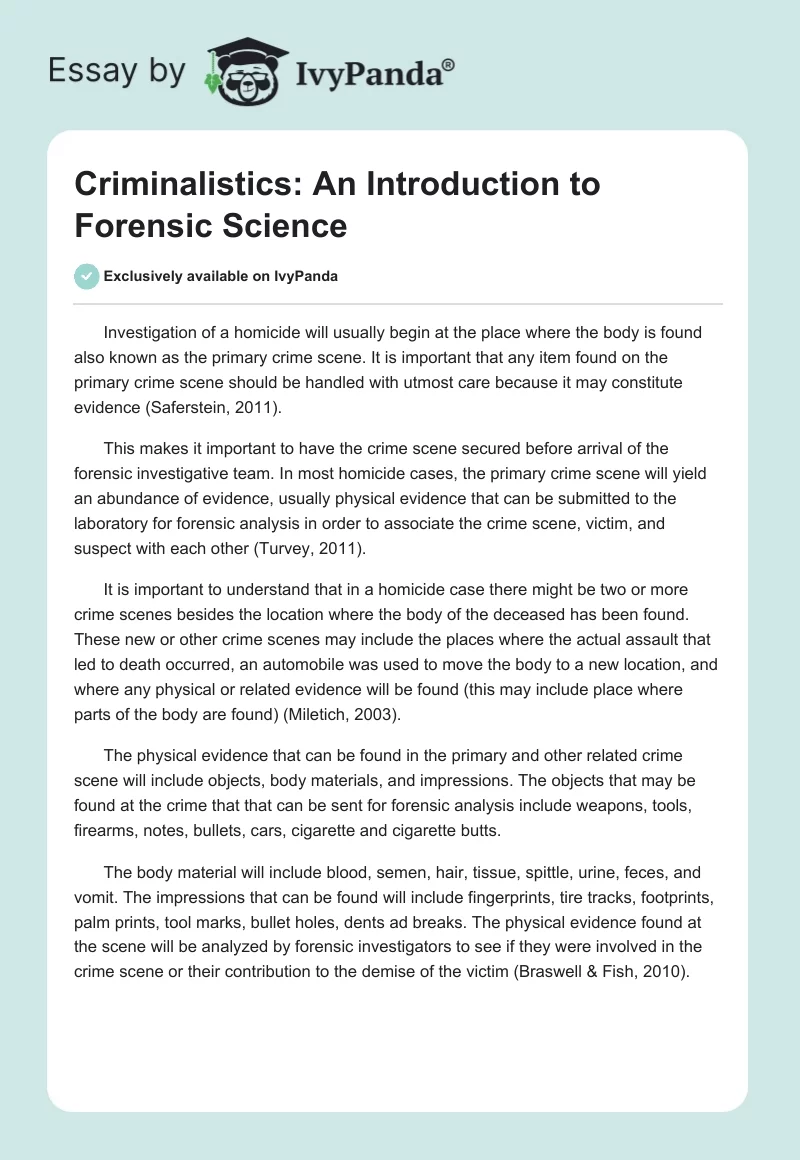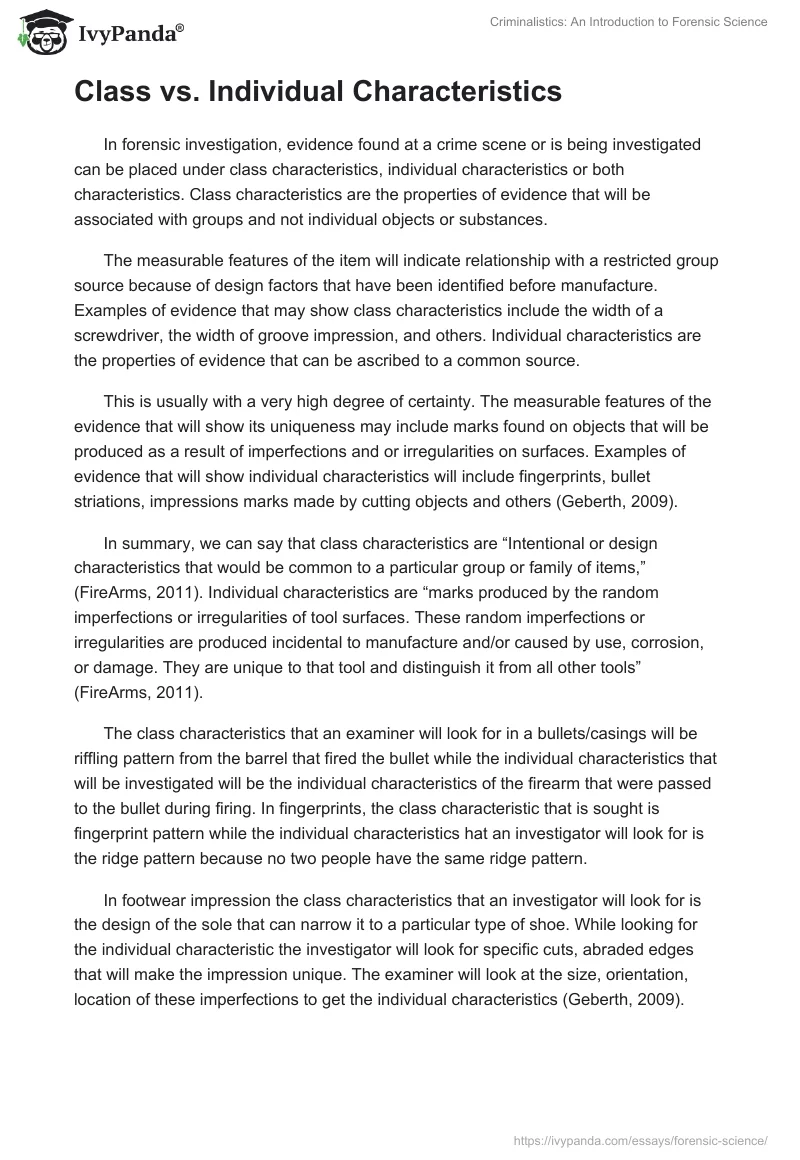Investigation of a homicide will usually begin at the place where the body is found also known as the primary crime scene. It is important that any item found on the primary crime scene should be handled with utmost care because it may constitute evidence (Saferstein, 2011).
This makes it important to have the crime scene secured before arrival of the forensic investigative team. In most homicide cases, the primary crime scene will yield an abundance of evidence, usually physical evidence that can be submitted to the laboratory for forensic analysis in order to associate the crime scene, victim, and suspect with each other (Turvey, 2011).
It is important to understand that in a homicide case there might be two or more crime scenes besides the location where the body of the deceased has been found. These new or other crime scenes may include the places where the actual assault that led to death occurred, an automobile was used to move the body to a new location, and where any physical or related evidence will be found (this may include place where parts of the body are found) (Miletich, 2003).
The physical evidence that can be found in the primary and other related crime scene will include objects, body materials, and impressions. The objects that may be found at the crime that that can be sent for forensic analysis include weapons, tools, firearms, notes, bullets, cars, cigarette and cigarette butts.
The body material will include blood, semen, hair, tissue, spittle, urine, feces, and vomit. The impressions that can be found will include fingerprints, tire tracks, footprints, palm prints, tool marks, bullet holes, dents ad breaks. The physical evidence found at the scene will be analyzed by forensic investigators to see if they were involved in the crime scene or their contribution to the demise of the victim (Braswell & Fish, 2010).
Class vs. Individual Characteristics
In forensic investigation, evidence found at a crime scene or is being investigated can be placed under class characteristics, individual characteristics or both characteristics. Class characteristics are the properties of evidence that will be associated with groups and not individual objects or substances.
The measurable features of the item will indicate relationship with a restricted group source because of design factors that have been identified before manufacture. Examples of evidence that may show class characteristics include the width of a screwdriver, the width of groove impression, and others. Individual characteristics are the properties of evidence that can be ascribed to a common source.
This is usually with a very high degree of certainty. The measurable features of the evidence that will show its uniqueness may include marks found on objects that will be produced as a result of imperfections and or irregularities on surfaces. Examples of evidence that will show individual characteristics will include fingerprints, bullet striations, impressions marks made by cutting objects and others (Geberth, 2009).
In summary, we can say that class characteristics are “Intentional or design characteristics that would be common to a particular group or family of items,” (FireArms, 2011). Individual characteristics are “marks produced by the random imperfections or irregularities of tool surfaces. These random imperfections or irregularities are produced incidental to manufacture and/or caused by use, corrosion, or damage. They are unique to that tool and distinguish it from all other tools” (FireArms, 2011).
The class characteristics that an examiner will look for in a bullets/casings will be riffling pattern from the barrel that fired the bullet while the individual characteristics that will be investigated will be the individual characteristics of the firearm that were passed to the bullet during firing. In fingerprints, the class characteristic that is sought is fingerprint pattern while the individual characteristics hat an investigator will look for is the ridge pattern because no two people have the same ridge pattern.
In footwear impression the class characteristics that an investigator will look for is the design of the sole that can narrow it to a particular type of shoe. While looking for the individual characteristic the investigator will look for specific cuts, abraded edges that will make the impression unique. The examiner will look at the size, orientation, location of these imperfections to get the individual characteristics (Geberth, 2009).
References
Braswell, M. C. & Fish, J. T. (2010). Crime Scene Investigation. Amsterdam: Elsevier.
FireArms. (2011). Fundamentals of Firearms ID. Web.
Geberth, V. J. (2009). Practical homicide investigation: tactics, procedures, and forensic techniques. New York: Taylor & Francis.
Miletich, J.J (2003). Homicide Investigation. Lanham, Md. : Scarecrow Press.
Saferstein, R. (2011).Criminalistics: An Introduction to Forensic Science. Upper Saddle River, NJ : Prentice Hall.
Turvey, B. E. (2011). Criminal Profiling: An Introduction to Behavioral Evidence Analysis. Amsterdam : Burlington, MA : Academic Press.


